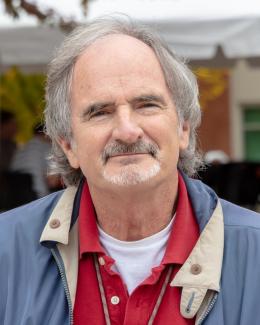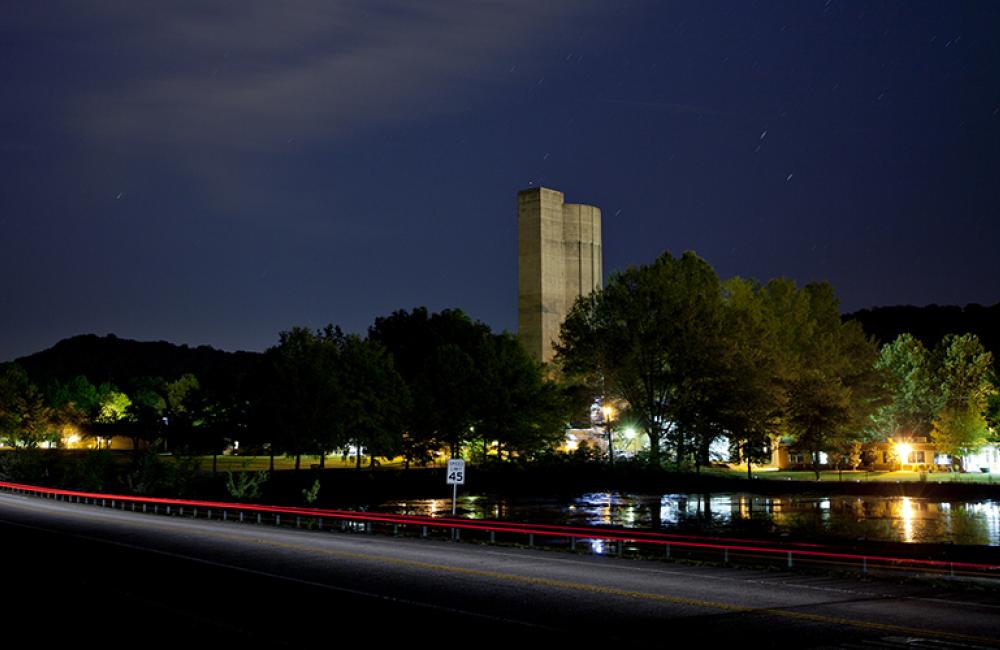Support from the science community, leaders extended Holifield Facility's legacy.
When the end of the Holifield Radioactive Ion Beam Facility was ordained in 2012, it came as a surprise to many. The facility had just completed nearly $10 million in upgrades and researchers were looking forward to new experiments at the facility that provides ORNL with its most recognizable landmark.
But the Holifield Facility was actually closing a new lease on life granted 20 years before, when the former heavy ion research facility drew the short straw in a decision process that would shutter one of three DOE physics facilities.
In 1990 DOE, faced with budget cuts in physics, asked its Nuclear Science Advisory Committee to recommend one of three facilities for closing: Holifield at ORNL, ATLAS at Argonne National Laboratory or the 88-inch Cyclotron at Berkeley Lab.
"Much to our surprise the committee recommended Holifield," says Jim Ball, retired ORNL associate director and a veteran of Holifield Facility physics research and operations from its earliest days.
"We had good reviews and a very active user group of 300. We went on a campaign and Congress said to fund Holifield in FY92. But it was clear 1992 would be the end of the road," Ball says.
At the same time the Holifield Facility's scientific director, Jerry Garrett, put forward the idea of a radioactive ion beam facility. With some reconfiguring, Holifield's Oak Ridge Isochronic Cyclotron, which had been repurposed years before to boost the Tandem Electrostatic Accelerator housed in the tall tower at Bldg. 6000, could produce radioactive beams to be boosted by the tandem.
The allure of radioactive ion beams, or RIBS, was they enabled the study of nuclear decay much farther from stability, says Lee Riedinger, who as a University of Tennessee physics professor was one of the early organizers of the university collaborations that helped establish the physics facility at ORNL.
"Holifield lost the review panel shoot-out, but we had ORIC, built by Alex Zucker in early '60s, and the tandem, which came on in the mid-70s. Jerry Garrett had the idea of combining the two, and worked with [user program manager] Russell Robinson on a plan. These were the early days of RIBs -- CERN was doing it," Riedinger says.
Garrett touted the RIB facility by noting, as many physicists do to this day, that the creation of elements in stellar events is the key to our existence -- "the stuff of stars" -- and RIBs were a way to learn more about these processes.
"He was like a tent evangelist about it," Ball says.
The Holifield Facility in the early 1990s had several things on its side, notably an avid user community that was ready to defend it. Program managers liked the idea of combining ORIC and the tandem. Ball points to another force key to the Holifield RIB Facility project: Rep. Marilyn Lloyd, then the 3rd District Congresswoman.
"She was a great friend to the Laboratory. [Rep. Lloyd] had her mind around everything going on," Ball says. Once a year she would talk to Will Happer, who was over DOE's high energy and nuclear physics programs. Around March of 1992 she was going to have her sit-down with him, and she asked me and Lee Riedinger for a briefing. But because of a schedule conflict their meeting didn't happen," Ball recalls.
Ball subsequently found himself in DOE's offices in Germantown, Md., writing a safety order for accelerators. Needing a quiet place to write, he asked a nuclear physics program manager, Dave Hendrie, if he could borrow a desk in his NP wing.
"Later his secretary stuck her head in -- 'Dave wants to see everybody in his office in 10 minutes, including you,'" Ball says.
Rep. Lloyd had talked to Happer after all, and Hendrie had been asked to find money for the project. Hendrie needed to get up to date on the proposal and Ball happened to be in the building and was able to provide an on-the-spot briefing.
Hendrie came back from the meeting with $200,000 in contingency funds to start the program, and the Holifield Facility ultimately received $2.4 million in accelerator improvement money over three years to make the conversion.
"In my mind it would have never happened without Rep. Lloyd talking to Happer. And I happened to be in the right place at the right time," Ball says.
The Holifield Heavy Ion Research Facility ceased operation at the end of FY 1992; at the same time, a construction directive arrived to begin the switch to the RIB facility. In December 1994 DOE approved the new Holifield Radioactive Ion Beam Faclity as a user facility. The first RIB came in October 1995 and in the summer of 1996 the facility's performance was demonstrated at or above specifications.
With the new RIB facility came the Daresbury Recoil Separator from England, which would be key to the astrophysics research, joining the Recoil Mass Spectrometer for nuclear structure and decay spectroscopy studies, whose acquisition had been spearheaded by Robinson in the 1980s.
"It took a while, five years, to get the intensity of RIBs they wanted," Riedinger says. "It's as much an art as a science, requiring a whole lot of extraction, separation and chemistry to get the chemistry you wanted."
Once they reached that point, the Holifield RIB Facility was off and running. HRIBF had a 570-member user group that had on average 4,500 research hours per year at its disposal, according to stats from the Physics Division's Alan Tatum, who was the facility's operations manager.
High-quality beams of 200 rare isotopes, more than 50 at world-record intensity, were used in groundbreaking experiments including the first measurement with a reaccelerated unstable beam in North America, and the first acceleration of neutron-rich fission fragments leading to confirmation of the doubly-magic nature of tin-132, Alan reports.
The successor to the Holifield Facility is the Facility for Rare Isotope Beams, now under construction at Michigan State University.
"We developed a lot of techniques that are the basis of the FRIB facility at Michigan State, which will produce much more intense beams, building on what was learned at Holifield by Jerry Garrett, Jim Ball and Jim Beene, among others," Riedinger says.
Jerry Garrett died in August 1999, as the Holifield RIB Facility was hitting its experimental stride. The former Rep. Lloyd passed away on Sept. 19 at age 89. FRIB is slated for completion in 2021.



